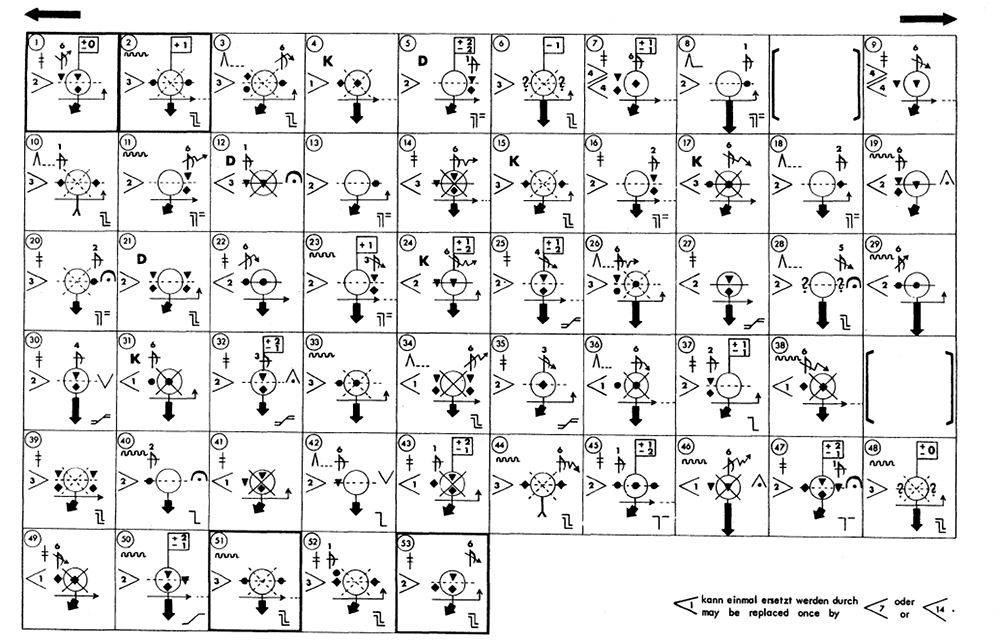Title: Plus or Minus
Instrumentation: 2 pianos and electronics
Year: 2017–18
Duration: 50 min.
Premiere: Wittener Tage für neue Kammermusik Festival 2025
Performers: GrauSchumacher Piano Duo and the Freiburg Experimental Studio
Why realize Plus Minus a second time? So that one may become more precise and more accurate with the rules of interpretation. As my knowledge of Stockhausen’s music became deeper, so too did my understanding of his intentions behind Plus Minus including an awareness of its potential limitations. In this current realization, I realize all 7 pages from Stockhausen’s score in two layers, with each piano representing a different layer in the compositional process. Yet as my structural planning for Plus Minus became more exact, the final composition began to drift away from Plus Minus into a sound world dominated by fragments from Stockhausen’s Mantra, which I used as material for the “Negative Band” of my realization. This is why I place the disjunction “or” into the title Plus or Minus that literally means “approximately” and, at the same time, seems to suggest a choice. But what is the choice?
Mantra asks the question, “How is human expression possible in a world where technology has become integral to all aspects of language and communication?” (For example, the “Morse code” references, human voices that are transformed through technology, ritualistic punctuation with crotales and woodblocks). This is a legitimate question at the end of the sixties when the possibilities of technology seem to answer some of our most fundamental human concerns. Fifty years later, my piece asks the question, “How is human expression possible in a world where technological control has damaged the earth as soon to be unlivable for humans?” In my realization, there is no promise of a Morse code as a universal means for communication, there are no human voices saved through technological means and no ritualized punctuation signals to which one can escape. What is uncovered in my work is the felt presence of seismic, almost geological forces that place human expression into its proper place as simply one aspect of a much more complex world. In Plus or Minus many electronic transducers are placed inside the piano so that each piano engages in a kind of feedback loop with its sounding materials. Low tones through the transducers cause the pianos to move and vibrate with the effect that the materiality of the piano itself – the wood and metal – begins to “sing” along with the performers. This possibility for musical expression in our damaged world I would call the “lyric of the Anthropocene” and it is towards this lyric that I push Stockhausen’s structural thinking with sound.
Link: www.wisemusicclassical.com/work/64882/Plus-or-Minus–Ming-Tsao/


